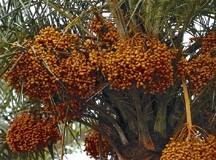Monocot Plant

Monocot Plant flowering plants having one cotyledon in their seeds. In the field monocot plants can be easily recognized by the presence of fibrous root system and leaves with parallel venation (with rare exceptions).
Phylogenetically, the monocots are now believed to have been derived from very primitive stock of Ranalian ancestry, and hence they are considered phylogenetically advanced than the dicots.
Most monocots are herbaceous, only Arecaceae have some trees (Palmyra palm, Fishtail palm, Royal palm, Coconut palm, Date palm, etc) but usually they are unbranched, and unlike dicot trees, have leaves making a crown at the top.
Monocot plants have vascular bundles in stem, which are closed and scattered in the ground tissue. Plants of this group placed under the class Liliopsida, have been divided into five subclasses and 65 families. Primitive monocot families are Alismataceae, Butomaceae etc, the most advanced Orchidaceae. The largest family is Orchidaceae which includes 15,000-18,000 species (total monocot species about. 55000), and the most economically important family is the Poaceae which includes rice, wheat, maize, sorghum, barley, sugarcane, oat, millet and most fodder plants. Coconut, date and banana are few important fruitplants that belong to monocot group. Monocot plant: Date palm
David Prain in his Bengal Plants listed about 557 monocot plants from the area now falls under Bangladesh; however, actual number may be more as new records are being added to the list. The largest inflorescence (in Corypha umbraculifera, having about 10,00,000 flowers), the largest seed (in Lodoicea maldivica), and the largest leaf (in Raphia vinifera) of the plant world are included in monocot plants (all in the family Arecaceae = Palmae). Rattan cane (Bet) may attain a length of about 200 m, and hence is the longest stem in the plant world, is also a monocot under the family Arecaceae. [Md Abul Hassan]
